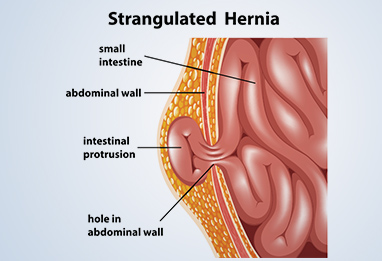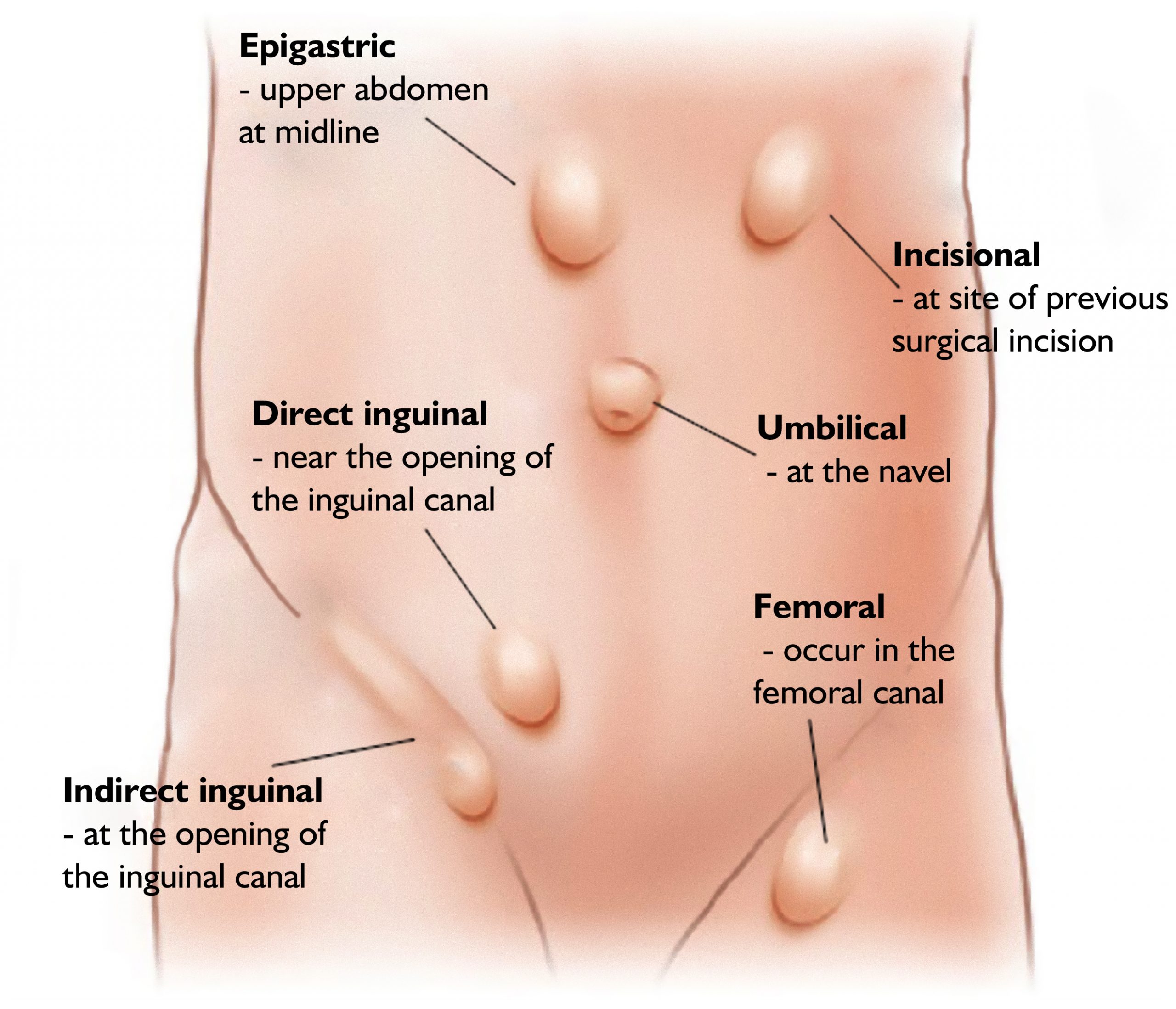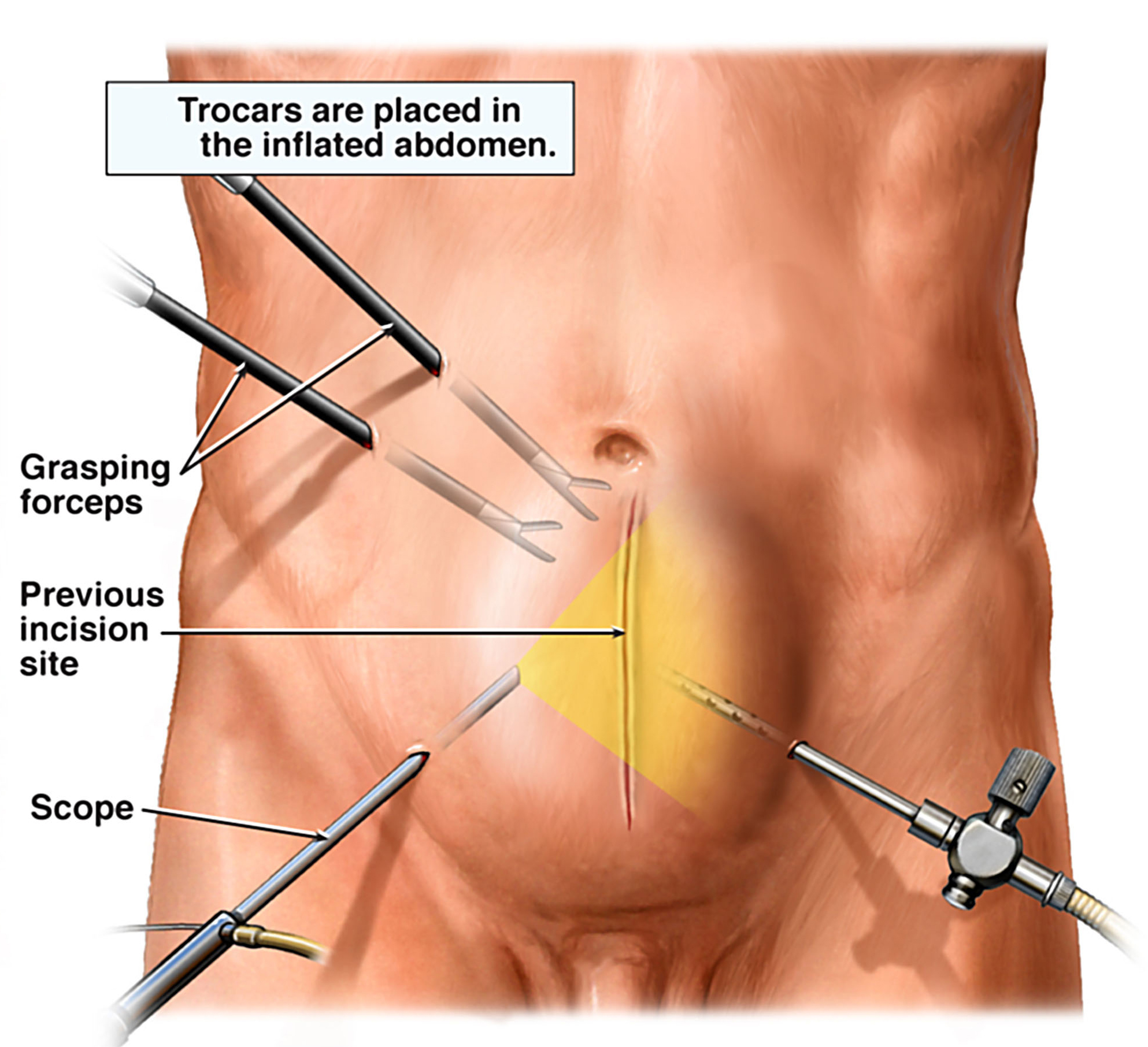Hernia develops when an internal organ such as the bowel squeezes through a weak spot in a surrounding muscle or the connective tissue covering it (fascia).
Most hernias are not life threatening, – sometimes they do not cause troublesome symptoms – but they cannot heal on their own.
In some cases, surgery is essential to prevent complications.





